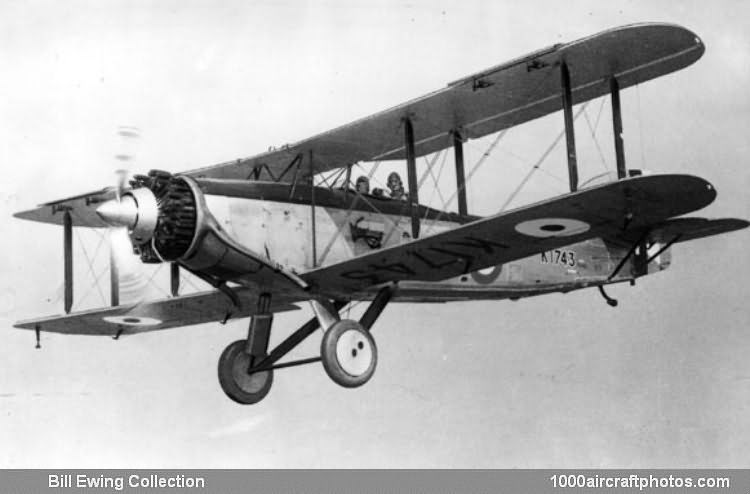04/30/2012. Remarks by Johan Visschedijk: "First flown in 1930, the Gordon two-seat day-bomber and general purpose aircraft was originally known as the IIIF Mk.V, the prototype J9154 being in fact a converted IIIF Mk.IVB.
The most outstanding difference in the two types was the use of a 525 hp Armstrong Siddeley Panther IIA radial engine in place of the 570 hp Napier Lion XIA. This installation resulted in certain structural changes in the forward fuselage, revised fuel, oil and electrical systems and the fitting of the forward gun outside the fuselage instead of in a blast trough. Though less pleasing in appearance than the IIIF, the Gordon had an improved performance and a much better take off fully loaded.
Ordered in quantity to Specification 18/30, the Gordon remained in production until 1934. The later production aircraft to Specification 14/33 were known as Gordon Mk.II, differing from the Mk.I in having a modified rear fuselage, Frise ailerons and a tail assembly similar to the Seal, which was the Fleet Air Arm version of the Gordon. A total of 160 Gordons (commencing with s/n K1729) was built for the RAF, and in addition there were some 30 retrospective conversions of the IIIFs already in service.
In th UK, the Gordon first went into service with No. 40 Squadron at Upper Heyford in April 1931. Overseas, it first saw service with No. 6 Squadron in the Middle East, where it replaced veteran Bristol Fighters. Gordons of No. 40 Squadron took part in the RAF Hendon Display of 1931, where they were 'attacked' during a mock raid by Bulldogs of No. 17 Squadron. During the Abyssinian crisis of 1935, Gordons of Nos. 35 and 207 Squadrons were sent to the Middle East as part of the general reinforcement of the RAF in that area.
Gordons remained with some first-line squadrons, both at home and overseas, until as late as 1938. They also served at Air Armament Schools for a number of years as target-tugs."
